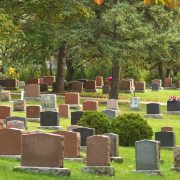Biodegradable Memorials: When Legacy Meets Sustainability
Biodegradable memorials represent a compassionate approach to honoring loved ones while promoting sustainability. These memorials, made from materials that naturally decompose, provide a meaningful alternative to traditional burial and cremation practices. Historically, many memorial options have contributed to environmental degradation, raising concerns about their long-term impact on the planet. With increasing awareness, many cultures now embrace these green memorials as acceptable and respectful ways to commemorate the deceased. By integrating remembrance with environmental responsibility, biodegradable memorials foster a connection between lasting legacies and a healthier Earth. This exploration delves into the significance and benefits of choosing a biodegradable approach.
Understanding Biodegradable Memorials
Biodegradable memorials consist of materials that decompose naturally, allowing for a sustainable way to honor the deceased. Common materials include biodegradable urns, tree pods, and mycelium products, each designed to return to the earth after use. Unlike traditional memorials, which often involve non-biodegradable components, these options contribute to environmental sustainability. They exemplify a growing trend focused on reducing human impact on the planet while preserving memories.
Historically, many memorial practices have left significant ecological footprints. Conventional burial sites often involve the use of metal caskets, concrete vaults, and embalming fluids, all of which can have lasting effects on the environment. The grass, trees, and ecosystems in cemeteries suffer from chemicals that leach into the soil. Awareness of these issues has prompted many individuals to seek alternatives that honor loved ones without compromising ecological integrity.
Cultural acceptance of biodegradable memorials varies across communities. Some traditions embrace natural burial as a return to nature, while others maintain longstanding rituals rooted in conventional practices. Growing environmental awareness is driving a shift in attitudes, leading to increased openness towards eco-friendly funeral options. Different cultures now recognize that the act of remembering can align with the values of sustainability and respect for the earth.
Another significant aspect of biodegradable memorials is their ability to foster a personal connection. These memorials allow families to create unique tributes that reflect the individuality of their loved ones. Options like planting a tree or leaving behind a flowered pod encourage ongoing interactions with nature, serving as living memorials. The connection to the environment can provide comfort and meaning, reminding us of the bond shared with those we cherish.
Ultimately, biodegradable memorials combine the need for remembrance with ecological consciousness. They promote a legacy that nurtures both memory and the environment, creating a harmonious cycle of life. As individuals increasingly seek to honor their loved ones without harming the earth, these alternatives present viable solutions. Embracing biodegradable practices reinforces a commitment to sustainability while celebrating the lives of those who have passed.
Benefits of Biodegradable Memorials
Choosing biodegradable memorials has a significant positive impact on the environment. Traditional memorial practices often generate waste and pollution, as caskets, grave markers, and embalming fluids can damage ecosystems. In contrast, biodegradable urns and other eco-friendly memorials break down naturally, enriching the soil and fostering plant life. These practices not only minimize environmental harm but also promote a sense of renewal, symbolizing the cycle of life and death.
Individuals often find deeper personal connections through these sustainable memorial options. Each biodegradable tribute can be customized to reflect the unique essence of the person being honored. For example, a memorial tree can serve as a living tribute, allowing families to visit and care for it over time. This ongoing connection emphasizes the importance of remembering loved ones while nurturing the environment, creating a profound relationship between memory and nature.
The economic aspects of biodegradable memorials reveal another layer of their benefits. Generally, these options tend to be more cost-effective than traditional practices, which can often involve expensive caskets and lengthy maintenance of burial plots. Biodegradable materials require less ongoing care, saving families both time and money in the long run. This financial consideration aligns with the choice for organic alternatives, appealing to those who may have budget constraints while still wanting to honor their loved ones meaningfully.
Many people discover that biodegradable memorials can transform grief into a more positive experience. Instead of a somber reminder of loss, these tributes can foster hope and longevity through their connection to nature. As flowers bloom or trees grow, they symbolize the continuation of life and remind us of the beauty surrounding us. In this way, biodegradable memorials become a celebration of life and legacy, allowing the memory of the deceased to flourish within the natural world.
Options and Innovations in Biodegradable Memorials
A variety of biodegradable memorials offer unique ways to honor loved ones while promoting ecological responsibility. For instance, tree pods allow people to plant a seed that grows into a living tribute. During the process, the ashes of the deceased mix with the soil, nourishing the tree as it flourishes. This option blends remembrance with environmental conservation, creating a lasting connection to nature.
Urns made from biodegradable materials provide another alternative for families seeking sustainable memorial options. These urns can be crafted from materials such as bamboo, salt, or recycled paper, ensuring they break down naturally over time. Some designs even incorporate seeds or soil, allowing families to create a garden or natural setting as a memorial. Such continuity enriches the surroundings while honoring the loved one’s legacy.
Innovative technologies are emerging in the field of biodegradable memorials. Mycelium-based products, for example, utilize mushroom spores to create eco-friendly urns that nourish the earth upon decomposition. These options reflect a growing awareness of how natural materials can serve both practical and symbolic purposes in memorial practices. Unique designs and products continue to evolve, appealing to those seeking sustainable ways to preserve memories.
Families can personalize biodegradable memorials to reflect the distinct qualities of their loved ones. Custom engravings, selected plants, or meaningful symbols can enhance the memorial’s significance. Such touches create a more intimate connection between the memorial and the person’s life. This customization process invites families to express their love in a manner that resonates deeply within their hearts.
Biodegradable memorials embody an approach that nurtures both memory and the environment, significantly enriching our relationship with nature. Each option available promotes sustainable practices while celebrating individual legacies. As awareness increases, more people will likely embrace alternatives that harmonize remembrance with ecological responsibility. By choosing biodegradable solutions, individuals take meaningful steps towards fostering a culture of sustainability that honors loved ones and our planet simultaneously.
A Lasting Legacy
Biodegradable memorials provide a heartfelt way to commemorate loved ones while fostering environmental stewardship. These innovative memorials honor individual lives through sustainable practices, promoting harmony with nature. As awareness of ecological issues grows, more families are embracing these alternatives, appreciating their ability to integrate personal values with environmental care. Choosing biodegradable options allows for meaningful remembrances that contribute positively to the Earth. In this way, memorials can become a part of life’s natural cycle, celebrating both memory and sustainability harmoniously.










